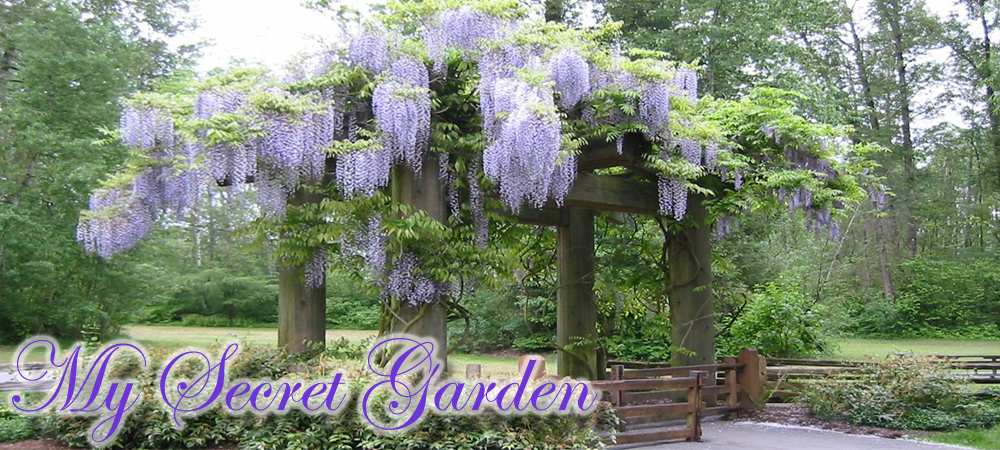“No sooner did I bend over and scratch the soil with the hoe that I began to unearth
bits and pieces ... of my past. Memories forever rooted in time were clustered in
my garden consciousness like potatoes, waiting, crying to be dug up. ...
I plant flowers and vegetables. I harvest memories - and life.”
- Nancy H. Jordan, 1993

Laguna, Resort Province of the Philippines, is a haven of fresh and pristine bodies of water such as hot springs, lakes, and waterfalls. Most notable is Pagsanjan Falls, formerly called Magdapio Falls, referred to as “shooting rapids.” It is found in Cavinti, starting from Pagsanjan town. Another is Lake Caliraya, which is located between Cavinti and Lumban. The strong mountain breeze that blows from the Sierra Madre Mountain Ranges and the distant Mount Banahaw makes the lake an ideal place for aqua sports like wind surfing, water skiing, sailing as well as game fishing. Laguna de Bay, Southeast Asia’s largest fresh water lake, stays pristine throughout the year due to regular rain showers. ~ Quoted
The trip to Pagsanjan Falls is an experience of a lifetime --- another of nature’s treats. This is an exhilarating three-hour boatride from Pagsanjan River to the fall and back. Two seasoned boatmen expertly maneuver the multi-colored native canoe against strong currents through 16 rapids. Moreover, one can imagine being lost in the wilderness when the boatmen paddle and lift their canoe at least five times going up through the gorges and in between the long 400-foot high cliffs of the clear river. However, there is less during the rainy season as the water level is high. During this time when the current is very swift and the falls gushes heavily through the river, the boat rides are cut short to avoid of the danger posed by the high water.
Innumerable hot springs abound in the province, including the famous Hidden Valley Springs which is located in a secluded part of Alaminos town. A trip to Dalitiwan River, located in Botocan, Majayjay, is an exciting adventure because the terrain is rugged, as mountain lands go, and the cool water or river gushes through the rocks and boulders along the watercourse in sweeping currents. The mystical Mt. Makiling in Los Baños is an inactive volcano, rising to about 1,109 meters above sea level. It is indeed endowed with nature’s beauty, making it ideal for all types of nature tripping, from trekking to bird and butterfly watching and even camping. ~ Quoted
“Experiencing the present purely is being empty and hollow;
you catch grace as a man fills his cup under a waterfall.”
~ Annie Dillard
Laguna is not only endowed with natural wonders. It also plays an important role in the country’s history as the birthplace of Dr. Jose Rizal, the country’s national hero, whose infancy and early manhood were spent in the towns of Calamba and Biñan. A number of churches of Spanish-influenced architecture in intricate Romanesque and Baroque design, mostly restored to their original elegance, are also found in the province.
Jose P. Rizal, the Philippines' National Hero
was born in Calamba, Laguna

The Rizal Family House in Calamba, Laguna
 Spanish-era church in Paete, Laguna
Spanish-era church in Paete, LagunaThe province is one huge showcase of Southern Tagalog craftsmanship. The town of Paete is famous for its woodcarvings, papier mache, and handmade paper products.Tree seedlings, sampaguita flowers, orchids, and exotic plants are big business. Cut flower farms are found mostly in towns of Calamba, Los Baños, and Bay. Sweet tropical fruits abound, such as the lanzones from Paete, pineapple from Calauan, chico, banana, mango, rambutan, and avocado. Add to these Laguna’s embroidered garments. Jusi cloth made from banana fiber is painstakingly, albeit deftly, transformed into beautiful pieces of clothing worthy of being tailored into the Philippine national costume, the Barong Tagalog. Shoes made from abaca hemp is a growing industry in the town of Liliw.
Paete wooden hand carved Last Supper
A Paete's artist ice sculpture
Liliw's footwear
Barong embroidery in Lumban
Owing to its nearness to Manila, Laguna is presently becoming the center of economic activity in the Southern Tagalog Region and the CALABARZON area. Business in the area is bustling as shown by the presence of several industrial estates designed for handling large scale firms engaged in textile manufacturing, electronics, food processing, industrial machines, and car assembly.
Enchanted Kingdom is the country’s first authentic theme park. It offers an awesome variety of rides and games. Take a trip to the Jungle Outpost, go to outerspace in Spaceport or go back in time in Midway Boardwalk or try the newest ride in Portabello, the Rio Grande, designed after the famous commercial port in Panama – just some of the enchantments waiting for you here.
Enchanted Kingdom is located in Sta. Rosa, Laguna, about 26 kilometers (16.1 miles) from Manila. It has a land area of 17 hectares (41 acres). The park is managed and operated by Enchanted Kingdom Inc., formerly named Amtrust Leisure Corporation. Enchanted Kingdom is a member of the International Association of Amusement Parks and Attractions.
 Los Banos - "Hot Springs" Resorts Capital of the Region
Los Banos - "Hot Springs" Resorts Capital of the RegionLos Baños is an oasis of many springs, as its name suggests. Mainit, the town's Tagalog name, means "hot" and alludes to the thermal springs that abound along the shores of Laguna de Bay. The medicinal properties of these springs were known to the Filipinos long before the Spaniards came to the country.
Agua Santa, ruins of the Spanish Governor's Palace, Los Banos
Splash Mt., Los Banos
Splash Mt., Los Banos
Mainit was a barrio of Bay until 1589. In 1595, a temporary building made of bamboo and cogon was built to serve as shelter for the patients who journeyed to Mainit to seek cures for their ailments. In 1671, more permanent structures like churches and hospitals were built only to be destroyed by a fire in 1727. The structures were re-erected at a slow rate. The church which now stands in Bayan, Los Baños dates back to 1851. The Spanish Governor's palace was began in 1879 but was only completed in 1892. This building provided the setting for one of the chapters of El Filibusterismo, the novel written by Jose Rizal.
At Los Baños Internment Camp, Laguna Province, on Luzon, in the Philippines, on 23 February 1945, the United States Army's 11th Airborne Division, assisted by Philippine guerrilla forces, carried out a lightning-swift raid forty kilometers behind Japanese lines and rescued 2,147 American and Allied civilian prisoners of war, men, women, and children. Most of the Japanese garrison were killed; the rest scattered. Not one prisoner was killed or seriously wounded; all were transported safely behind American lines. Not one paratrooper of the battalion directly involved was killed. In a crucial blocking force to the west of the prison camp, four 11th Airborne troopers were killed. The Philippine guerrillas suffered two men killed. Tragically, shortly following this magnificent rescue, Japanese forces returned and wreaked vengeance on the town of Los Baños, massacring some 1500 helpless Filipino civilians.
In 1909, the University of the Philippines College of Agriculture(UPCA) was established. Four years of war and Japanese occupation destroyed many buildings, roads, and bridges in and around Los Baños. UPCA, in successions, became a Japanese camp for prisoners of war, an internment camp for allied nationals, a target of Kempetai punitive measures, and the headquarters of a secret organization of guerillas. On February 23, 1945, the campus was sacked by the Japanese and was razed to the ground. Only Baker Hall, the armory-gymnasium, remained.
Rice World - International Rice Research Institute, Los Banos
A showcase of information about rice, world's important staple food.
In 1962, the International Rice Research Institute (IRRI) began its operation. Aside from its historical past, Los Baños is also a town full of myths and legends. Mount Makiling is said to be the home of Maria Makiling, the legendary maiden of Los Baños. Sixty kms. south of Manila, Los Banos is the next town to Calamba from the South Expressway exit.
“ Learning to produce our own food is essential if we are
to ever truly take control of our own lives. It liberates
us from the role of passive consumer, remote from real
decisions, alienated from nature.”
~ Primal Seeds
Mt. Makiling facing North Expressway
Mt. Makiling is home to more than 2,000 species of flowering plants, 291 species of ferns, 211 species of mosses, 45 species of mammals, 181 species of birds, 65 species of reptiles, 22 species of amphibians and thousand insects and other arthropods.

On the Road to Mud Spring, Mt. Makiling
Laguna de Bay
Laguna de Bay

Makiling Rainforest Park (MRP)
This mountain features large tracks of natural and old-growth forests as well as plantations of endemic and exotic trees. It presents geologic wonders like the mudsprings, flatrocks, creeks, waterfalls and mountain peaks. The reserve harbors endemic and endangered flora and wild animals
Museum of Natural History (MNH) A center for documentation and repository of biological specimens for scientific reference. Features diorama and thematic displays of wildlife species and ecoystems.
Boys Scouts of the Philippines Jamboree Site
Open for camping, picnic, swimming and outdoor group activities. Advanced bookings required.
Pook ni Mariang Makiling
Facilities include pavilions, cottages, picnic huts and swimming pool.
Historical sites in Los Baños:
Old Pantalan - ruins of the American era port
Yamashita-Homma Shrine
Baker Hall - Japanese Internment Camp
Paciano Rizal Shrine.

Waterfall at Botanical Garden

University of the Philippines in Los Banos (UPLB) :
The premier Agriculture & Natural Resources
Academe in the country

The NAC is the show window of Laguna.
It is an ideal vantage point for a panoramic view of Laguna de Bay, Talim Island, Crocodile Lake & the International Rice Research Institute. Also found within its premises is a Ballet Studio & the Rilda O'Brien Cliburn Library or the Humanities, which was established in 1981 as part of the overall logistical support to the operations of the Philippines High School for the Arts. Managed by the Cultural Center of the Philippines, the NAC has 62 cottages,
an auditorium, and seminar, convention facilities.
| |


































No comments:
Post a Comment